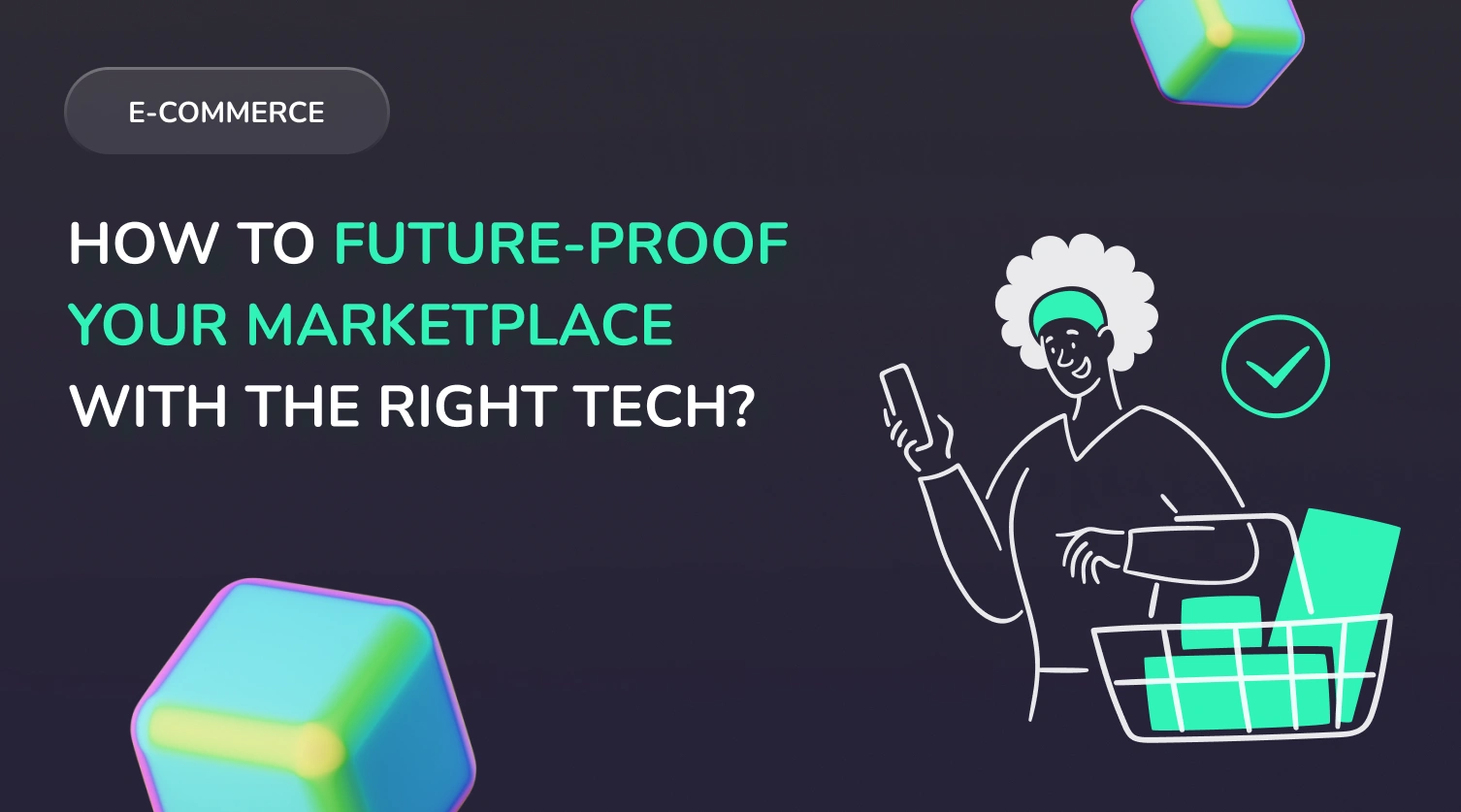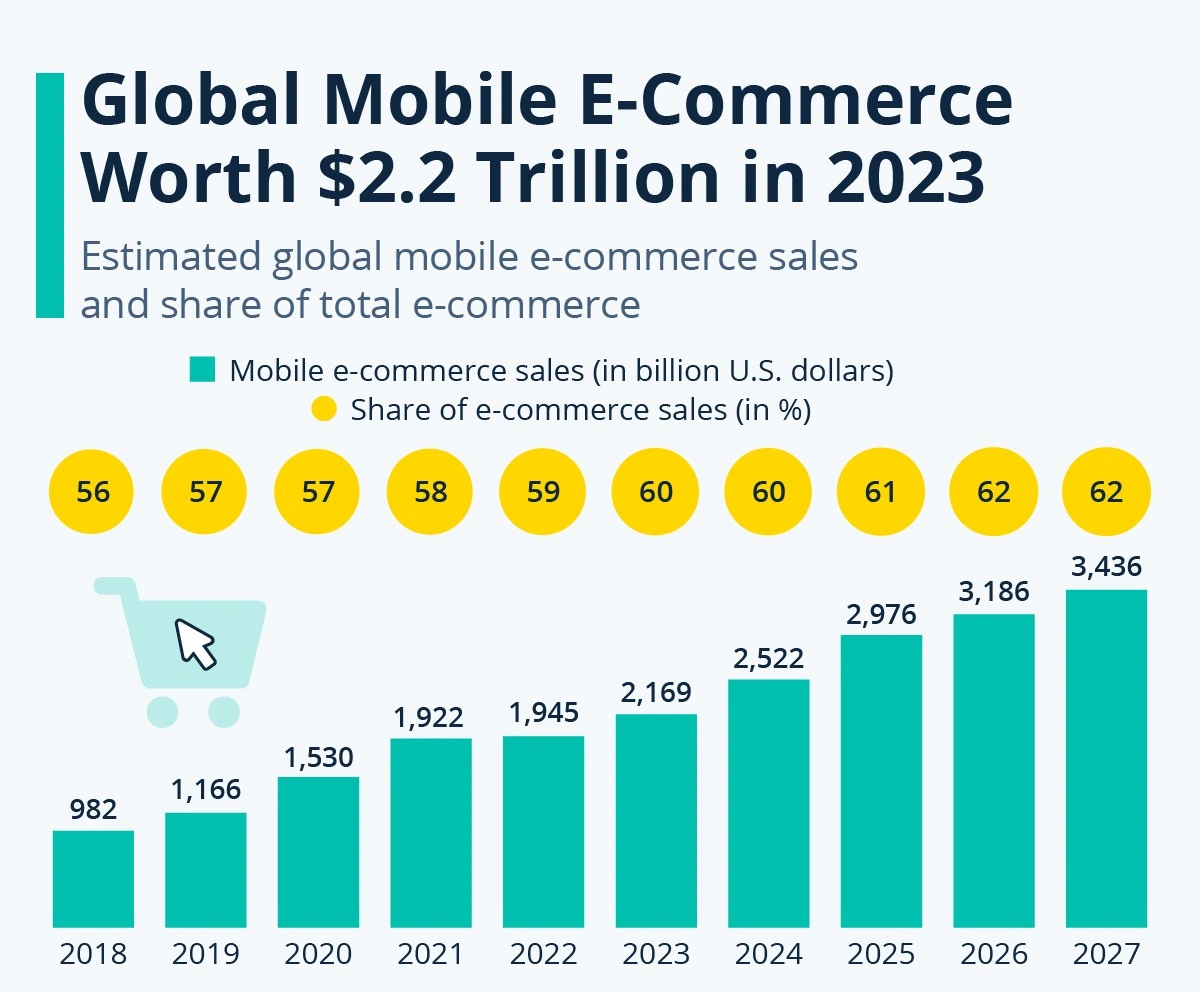
Building a successful e-commerce business goes beyond having great products — creating a seamless shopping experience that turns visitors into loyal customers. Despite having a well-stocked online store, many startups and businesses struggle to boost conversions. The secret to success? A user-friendly, conversion-optimized UI/UX design that guides your customers effortlessly to checkout.
At Corpsoft Solutions, we specialize in crafting digital experiences that drive actual revenue. From AI-powered e-commerce platforms to SaaS startups, we’ve helped businesses enhance their UX and see tangible results. Our experts reveal the key UI/UX design strategies that will help you increase sales, reduce cart abandonment, and elevate your customer experience. Ready to transform your e-commerce platform into a conversion powerhouse?
Keep It Simple & Intuitive For First Impressions And Navigation
Your website only takes a few seconds to capture visitors’ attention. If users struggle to understand your product offerings or find the navigation confusing, they leave — often never to return. Poorly structured menus, cluttered layouts, slow load times, and hard-to-read fonts create a frustrating user experience, leading to higher bounce rates and lost sales opportunities.
Why It Matters:
- 88% of users are less likely to return to a website after a bad experience.
- Websites with straightforward navigation and intuitive layouts see up to 50% lower bounce rates.
- AI-powered personalization can boost conversions by up to 30% by tailoring the experience to individual users.
- 79% of shoppers say site performance influences their purchase likelihood.
Key UI/UX Features for Better Navigation & Engagement:
✔ Clean, modern design – A minimalist layout improves focus on key products and services while reducing cognitive overload. Users should instantly understand what you offer.
✔ Sticky navigation – Keeping the menu accessible at all times (especially on mobile) ensures users can browse efficiently and quickly find what they need.
✔ Clear, action-driven CTAs (Call-to-Actions) – “Buy Now,” “Get Started,” and “See More” buttons should be visually striking, strategically placed, and optimized for engagement.
✔ AI-powered personalization – AI SaaS tools can analyze user behavior and adjust recommendations, content, and promotions in real time, enhancing engagement and sales.
✔ Consistent branding & color psychology – A well-thought-out color scheme can evoke trust and influence buying decisions. For example, blue tones suggest reliability (ideal for fintech SaaS), while orange or red can create urgency (great for e-commerce).
✔ Fast-loading pages – 53% of mobile users abandon a site if it takes longer than 3 seconds to load. Optimize images, use lazy loading, and leverage CDN services to ensure quick performance.
✔ Mobile-responsive navigation – Over 60% of web traffic now comes from mobile devices. Ensure a seamless experience with mobile-friendly menus, collapsible navigation, and touch-friendly elements.
Example of UX Optimization in Action:
A leading AI-powered SaaS e-commerce platform implemented:
- Sticky headers for quick access to categories,
- AI-driven product recommendations to personalize user experiences and
- Refined CTA placements to direct customers toward high-converting actions.
The result?
A 23% increase in conversions, reduced bounce rates, and improved customer retention — all by making the user journey smoother and more intuitive.
🚀 Takeaway: A well-structured, fast, and personalized user experience directly impacts engagement, conversions, and brand loyalty. Prioritizing intuitive navigation and AI-driven enhancements can significantly improve your website’s performance.
Product Pages That Sell: Turning Visitors into Buyers
Your product page isn’t just a static display of items — it’s your best salesperson, working 24/7 to convert visitors into customers. A well-optimized product page can significantly impact sales, engagement, and customer trust. Every design choice, from images to descriptions, should guide users toward confidently purchasing.
Visual Appeal That Drives Engagement
First impressions matter, and for online shoppers, visuals are everything. High-quality images, zoom-in capabilities, and 360° product views create a richer shopping experience and help customers feel more confident in their choices. Interactive visuals reduce hesitation and return rates by giving buyers a more precise expectation of the product. In industries like fashion, home décor, and electronics, detailed product imagery can mean the difference between a sale and an abandoned cart.
Descriptions That Sell, Not Just Inform
A well-written product description should do more than list technical specs—it should communicate value. Instead of simply stating, “This laptop has 16GB RAM and a 512GB SSD,” a compelling description highlights the benefits: “Experience lightning-fast performance for multitasking and seamless storage for all your important files.” Customers respond better when they understand how a product improves their daily life rather than just reading a list of features.
Social Proof & AI-Driven Reviews
Trust is a significant factor in online purchasing decisions, and social proof is critical. Reviews, ratings, and user-generated content build credibility and influence hesitant buyers. AI-powered SaaS tools can automate review collection, highlight top-rated products, and generate personalized recommendations based on previous purchases. When customers see that others have had a positive experience, they’re far more likely to complete their purchase.
Helping Customers Make Confident Decisions
Product comparison features provide extra reassurance by allowing customers to evaluate similar options side by side. Whether it’s choosing between different software plans, electronic gadgets, or subscription tiers, side-by-side comparisons highlight key differences and help users find the best fit. The more informed a customer feels, the faster they move toward checkout.
Real-World Success Story
A fast-growing AI-powered SaaS e-commerce platform implemented dynamic product pages featuring AI-generated recommendations and automated review curation.
Reflektion is a company founded in 2012 by former Google engineer Amar Chokhawala. It developed a personalization platform that uses machine learning to increase conversion rates and revenue for digital retailers. Reflektion’s clients include companies such as The Walt Disney Company, Uniqlo, and Godiva. For example, the surf brand O’Neill reported a 26% increase in conversions, an 85% boost in user engagement, and a 17% increase in average order value after implementing Reflektion’s solutions.
The result?
A 35% increase in sales and a 20% boost in customer retention within just a few months. By enhancing product pages with AI-driven personalization, they turned casual visitors into loyal buyers.
Your product pages should do more than display information — they should guide, persuade, and reassure. Optimizing visuals, descriptions, and trust-building elements creates a seamless buying experience that keeps customers returning.
Search Optimization Help Users Find What They Need Faster
A seamless search experience can differentiate between a conversion and a lost sale. Users who struggle to find what they need to abandon the site and look elsewhere. Optimized search functionality improves user satisfaction and increases engagement, time on site, and revenue.
Why It Matters:
- 43% of website visitors go directly to the search bar on an e-commerce or SaaS platform.
- Visitors who use site search are 2-3 times more likely to convert than those who browse manually.
- Poor search functionality leads to 12% of users exiting a website after a failed search.
- AI-driven search engines can boost revenue by up to 30% by offering hyper-personalized results.
Features That Improve Search UX:
✔ AI-powered search suggestions – Smart autocomplete and NLP-based search tools predict what users want, even if they type incomplete or misspelled queries. AI B2B SaaS engines analyze previous searches, user preferences, and trending queries to refine results.
✔ Semantic search & intent recognition – Instead of relying solely on keyword matching, AI-powered search understands the context and intent behind a user’s query. For example, searching for “budget-friendly laptops” returns affordable options rather than just products with “budget” in their name.
✔ Advanced filters & sorting – Let users refine searches based on relevant parameters like price, brand, popularity, customer ratings, availability, and new arrivals. Filters help prevent frustration and guide users toward the right product or service.
✔ Personalized search results – AI-powered SaaS tools analyze user behavior, previous purchases, and browsing history to deliver personalized product recommendations within search results. This increases relevance and boosts conversions.
✔ Voice & image search – Voice search, powered by AI, enables users to find products using natural language queries. Image search allows users to upload photos to find visually similar products — especially useful in fashion, home décor, and automotive industries.
✔ Zero-results page optimization – Instead of displaying “No Results Found,” intelligent search engines offer alternative suggestions, related products, or popular searches to keep users engaged.
Example of Search Optimization Success
A SaaS e-commerce platform integrated AI-driven search enhancements, including real-time search suggestions, voice search, and personalized ranking. The result?
- A 35% increase in conversions from users who used search.
- A 40% reduction in search abandonment rates due to improved query recognition.
- An 18% increase in average order value (AOV) from personalized search recommendations.
Optimized search functionality is more than just a convenience—it’s a revenue driver. AI-powered search tools enhance user experience and significantly increase conversions and customer retention.
Checkout UX: The Final Step to Securing Sales
A well-optimized product page can excite a shopper, but if the checkout process is frustrating, they’ll abandon their cart without a second thought. A slow, confusing, or overly complex checkout experience is one of the top reasons for lost sales. The key to reducing abandonment rates is creating a seamless, friction-free process that gets customers from the cart to confirmation in the shortest time possible.
Why One-Page Checkout Works
The fewer steps a customer takes to add a product to their cart and complete the purchase, the higher the chances of conversion. A streamlined one-page checkout condenses everything into a single, easy-to-navigate screen — reducing distractions and making the process feel faster. Multi-step checkouts with unnecessary fields or required account creation often drive shoppers away before hitting “Place Order.”
Give Customers the Freedom to Choose
Forcing users to create an account before purchasing is a significant barrier. Many shoppers want to check out quickly without committing to an entire registration process. Offering a guest checkout option increases conversions, especially for first-time buyers. If account creation is necessary, allow users to sign in with Google, Apple, or social media accounts to speed up the process.
AI-Powered Autofill & Payment Flexibility
Every second a customer spends filling out forms increases the risk of cart abandonment. AI-powered autofill solutions can prepopulate address and payment details based on previous orders, reducing friction and improving the overall user experience. Additionally, offering multiple payment options — credit/debit cards, digital wallets like Apple Pay and Google Pay, BNPL (Buy Now, Pay Later) services, and even cryptocurrency — ensures that customers can pay in whatever way is most convenient.
The Revenue Impact of a Frictionless Checkout
A global e-commerce platform saw a 28% drop in cart abandonment rates after integrating AI-driven autofill, one-page checkout, and expanded payment options. The smoother experience encouraged more customers to complete their purchases, directly increasing revenue and customer retention.
An excellent checkout experience doesn’t just reduce abandonment rates — it builds trust, increases conversions, and keeps customers returning. Businesses can turn more browsers into buyers by minimizing friction, offering flexibility, and leveraging AI-powered optimizations while creating a seamless shopping experience.
Mobile-First Design: Optimize for Every Device
With over 60% of e-commerce traffic coming from mobile devices, having a mobile-optimized website isn’t just an option — it’s necessary. If your store isn’t designed with a mobile-first approach, you’re losing potential sales to competitors who are. A seamless mobile shopping experience ensures users can browse, add to cart, and check out effortlessly, regardless of screen size.
Key Mobile UX Optimizations
- Adaptive & Responsive Design – Your website should automatically adjust to different screen sizes, ensuring flawless display and functionality on smartphones, tablets, and desktops. Poorly formatted pages, misplaced buttons, or overlapping text drive users away.
- Touch-Friendly Navigation – Mobile users interact with their devices differently than desktop users. Large, easily clickable buttons, well-spaced links, and gesture-friendly interfaces improve usability and reduce frustration.
- Speed Optimization with AI-Powered Tools – Mobile users are impatient—if a page takes longer than 3 seconds to load, 53% of users will abandon it. AI SaaS tools can optimize loading speeds by compressing images, caching content, and dynamically adjusting page elements for better performance.
The Business Impact of Mobile Optimization
The fashion retailer’s 37% increase in mobile sales resulted from multiple factors, including implementing adaptive design and mobile-specific speed enhancements. Research from Forrester backs this up, showing that improving mobile UX can reduce bounce rates by up to 50%. Customers with a smoother mobile shopping experience are more likely to stay on the site longer, explore more products, and ultimately convert.
In addition, optimizing mobile shopping experiences is critical for maintaining competitive advantage.

According to Statista, mobile e-commerce sales are projected to account for 72.9% of total e-commerce sales by 2023. Companies that fail to provide mobile-friendly designs risk losing out on most potential customers. This shift in consumer behavior emphasizes the importance of a mobile-first approach for businesses aiming to capture a growing, mobile-centric audience.
Furthermore, AI-driven speed optimization tools are proven to boost mobile performance. Tools like image compression, caching, and dynamic content loading significantly affect how quickly a page loads on mobile devices. These improvements, supported by AI and machine learning, don’t just speed up page load times — they enhance the user experience, reduce the likelihood of cart abandonment, and increase conversions.
The New Standard for E-Commerce. Personalization & AI-Powered Recommendations
Modern consumers expect tailored shopping experiences. AI-driven personalization isn’t just a nice-to-have — it’s a powerful conversion booster. Personalized UX can increase conversions by 20-30%, making shoppers feel like the store was designed just for them. By leveraging AI, businesses can predict customer preferences, enhance product discovery, and re-engage potential buyers.
AI-Driven Personalization Strategies
- Intelligent Product Recommendations – AI analyzes browsing and purchase history to suggest relevant products, increasing cross-sells and upsells.
- Dynamic Pricing Strategies – AI adjusts prices based on demand, competition, and customer behavior, maximizing revenue while offering competitive deals.
- AI-Powered Email Retargeting – Automated email follow-ups for abandoned carts, personalized discounts, and product alerts keep customers engaged and return them to complete purchases.
Personalization, especially AI-driven, has proven to be one of the most effective ways to increase customer retention and repeat purchases.
The ability to offer tailored product recommendations based on a customer’s browsing history or purchase behavior enhances the shopping experience and drives more engagement.
A 25% increase in repeat purchases by a SaaS-driven e-commerce platform implementing AI-based personalized recommendations demonstrates this effect. By analyzing data on individual customer preferences, AI can suggest products that are more likely to resonate with each shopper, creating a more personalized shopping journey. This level of customization encourages customers to return for future purchases, boosting brand loyalty.
Сonversion Triggers: Creating Urgency & FOMO
Psychological triggers play a crucial role in driving conversions. When customers feel a sense of urgency or exclusivity, they’re more likely to take action. Scarcity, limited-time deals, and social proof can nudge hesitant buyers into completing their purchases faster.
Proven Strategies to Boost Conversions
- Limited-Time Offers & Countdown Timers – Seeing a deal that expires in “2 hours” creates a psychological push to buy now rather than later.
- Live Social Proof Pop-Ups – Showing real-time notifications like “John from NYC just bought this item!” creates a bandwagon effect, making customers feel like they shouldn’t miss out.
- AI-Powered Retargeting Ads – Bringing back lost visitors through AI-driven retargeting increases the chances of conversion. AI can analyze browsing behavior and serve personalized ads across multiple platforms.
A home décor e-commerce store increased same-day conversions by 32% after implementing urgency-driven pop-ups and AI-powered retargeting ads. By leveraging FOMO (Fear of Missing Out), they turned indecisive visitors into paying customers.
Creating urgency, building trust, and personalizing the user experience is key to e-commerce success. Businesses can significantly boost sales, reduce abandonment rates, and enhance customer loyalty by implementing AI-powered tools and optimizing UX for seamless navigation.
Wrapping Up
Optimizing your e-commerce platform with AI-powered personalization, seamless navigation, and mobile-first design can significantly improve user engagement, conversion rates, and customer retention. However, implementing these technologies can be complex and requires expertise in both design and development.
We specialize in creating tailored digital solutions that help businesses scale effectively. By leveraging our expertise in AI, UX/UI design, and e-commerce platforms, we can help your company or startup optimize its website, enhance user experience, and boost revenue. Whether you’re looking to refine your product pages or implement dynamic personalization, our team is ready to assist you in building a seamless, high-conversion digital experience. With innovative, scalable solutions, let’s take your business to the next level.
Subscribe to our blog

